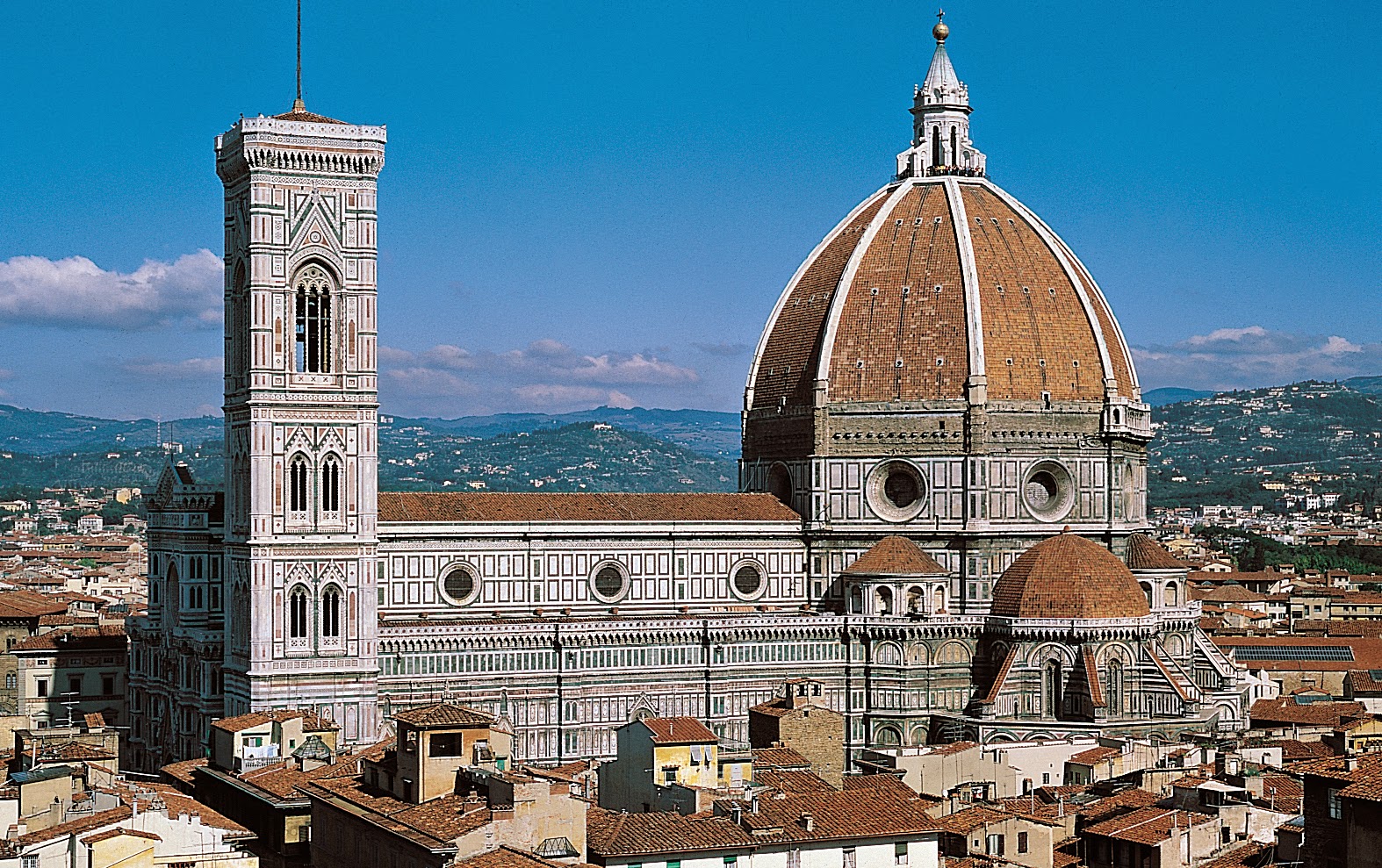"I have a book here," said my friend Alister Peridot as we relaxed by the evening fire, "which I think, Adamas, that we simply must pursue." Peridot paused to take a sip of his wine. We had made our way to Peridot’s study at his Los Angeles home and were seated in the leather chairs in front of the cozy fireplace.
"When you say pursue - what exactly do you mean monsieur?” I asked.
“Recently, I have been fascinated by the birth of the Renaissance. Many identify that period with Leonardo da Vinci; however, this small book has convinced me that another genius 100 years before da Vinci had already made staggering contributions to mathematics, architecture, and pure reason. Listen to this."
“On August 19, 1418, a competition was announced in Florence, where the city’s magnificent new cathedral, Santa Maria del Fiore, had been under construction for more than a century:"
"Whoever desires to make any model or design for the vaulting of the main dome of the cathedral under construction by the Opera de Duomo- for armature, scaffold or other thing, or any lifting device pertaining to the construction and perfection of said cupola or vault - shall do so before the end of the month of September. If the model be used he shall be entitled to a payment of 200 gold Florins."
Peridot flipped the cover to show me the book he was reading, Brunelleschi’s Dome—How a Renaissance Genius Reinvented Architecture.
“On August 19, 1418, a competition was announced in Florence, where the city’s magnificent new cathedral, Santa Maria del Fiore, had been under construction for more than a century:"
"Whoever desires to make any model or design for the vaulting of the main dome of the cathedral under construction by the Opera de Duomo- for armature, scaffold or other thing, or any lifting device pertaining to the construction and perfection of said cupola or vault - shall do so before the end of the month of September. If the model be used he shall be entitled to a payment of 200 gold Florins."
Peridot flipped the cover to show me the book he was reading, Brunelleschi’s Dome—How a Renaissance Genius Reinvented Architecture.
In his best professor's voice, he continued, “It seems Filippo Brunelleschi was an artist, sculptor, and architect. His colleagues dubbed him Pippo because of his small stature, but his ideas were far from small. He is most famous for the daring and original design behind this project, the Cupola, for the cathedral in Florence.”
“Have you ever visited Florence Bontemps?”
The very next day, we were on a flight to Italy . . .
In his retirement, my friend Alister Peridot was rather impetuous. His never-ending curiosity was that of a child, always ready to embark on one more adventure. Little did I know there was another motive for our trip to Florence!
We settled into our first-class accommodations. While swirling his vintage Bordeaux, Peridot began, “The managing director of the Uffizi Gallery, a former student of mine, has alerted me that a man resembling Dee Davies was spotted roaming the galleries. He has left a stone with the curator.
“My dear Alister, it’s not a crime to visit a celebrated museum like the Uffizi; I understand thousands visit daily.”
“Absolutely, my boy; however, an interesting aside recently, the 122-carat Peridot from St. John’s Island is on loan from the Natural History Museum in Los Angeles. Dr. Kampf, the Hall of Gems and Minerals curator, informed me, knowing my predisposition towards the gem - to maintain a watchful eye. I suspect this is a thespian attempt by Davies to get my attention. Also, a holiday in Florence will allow us to take in the architectural sights, history, sounds, and smells and sample the city's cuisine. I’m very curious to see Brunelleschi’s Dome.”
It was an early morning spring day in Tuscany. The sky was pale blue, the sun golden, and fluffy white clouds dotting the horizon. The air was warm yet fresh. We were standing outside the cathedral, Santa Maria del Fiore. The dome was gigantic, with eight white marble rims arching impossibly towards heaven. Eight massive sections of masonry faced with red terracotta tile topped an elegant marble lantern against the pale blue Tuscan sky.
With a slight tip of his head, a wink of an eye, and a grin, Peridot remarked, “Here we are, my boy. Let us see firsthand what the power of human ingenuity from the 15th century was able to accomplish.”
We entered the cathedral and reached the central rotunda beneath the massive dome. Neither of us spoke, words could not describe the flood of emotion. Suspended in time, beneath this enormous structure, complete silence.
With a hushed involuntary “Ca alors! Alister, can you believe this” - the scene overwhelmed me.
In a whispered voice, “Indeed, Bontemps! Gothic Cathedrals, by contrast, towered to the heavens with soaring vertical lines, dwarfing its occupants. However, this Cupola envelopes its guests with warmth, cradled by a divine power."
I turned to my friend, “Pippo, you say, because of his small stature, it doesn’t really seem to fit the scale of this accomplishment, does it?”
We found a seat, and time simply slipped away as we quietly talked beneath the warmth of this magnificent work of art.
"Tonight we will settle in for the evening, said Peridot, tomorrow we will make our way to the Uffizi Gallery to examine this mystery stone received by the curator."
. . . To be continued.
(Stories in chronological order, click here.)
. . . To be continued.
(Stories in chronological order, click here.)


Comments